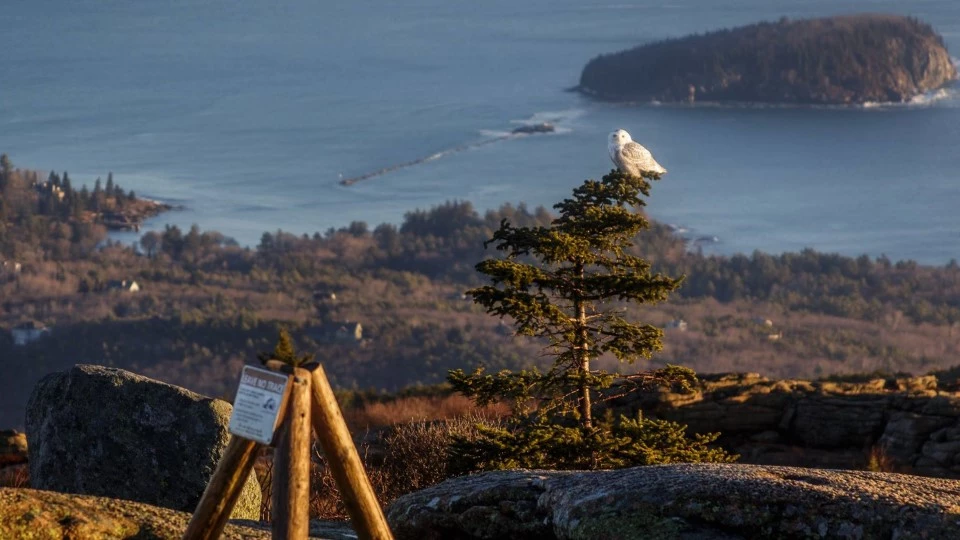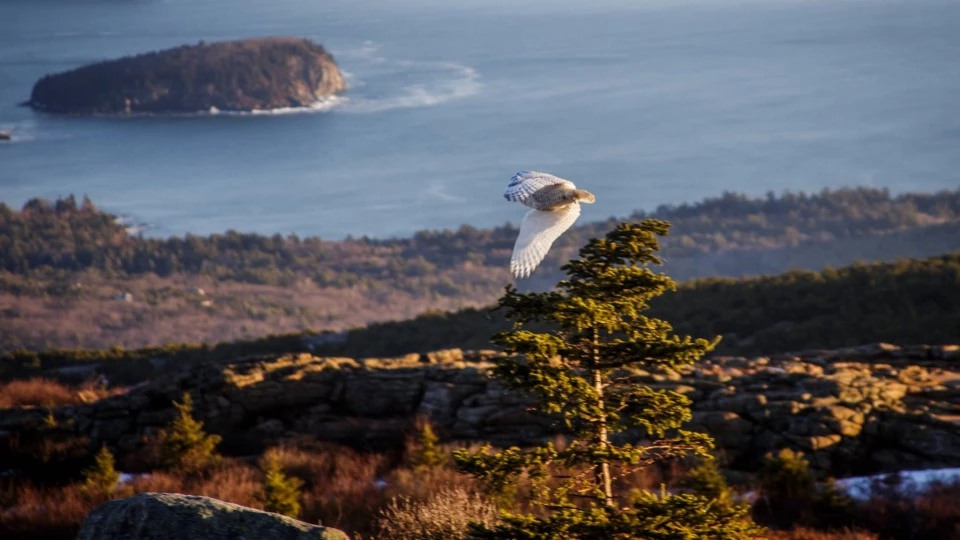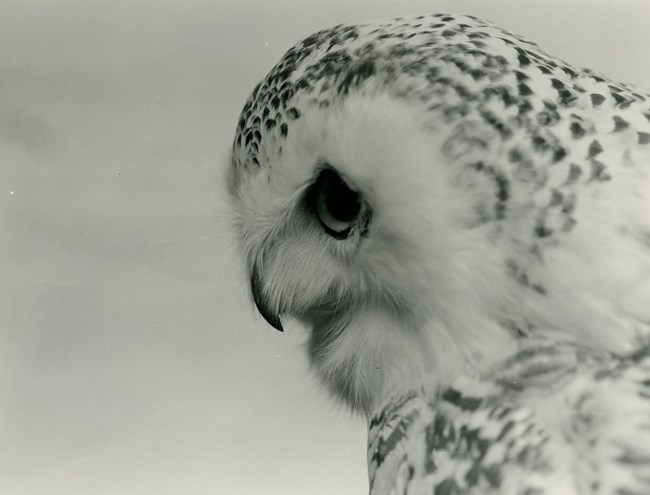Last updated: November 13, 2023
Article
Do Not Disturb: Please Enjoy Acadia's Snowy Owls From A Distance


Left image
A snowy owl flying from spot to spot in winter daylight usually isn’t “just moving around.”
Credit: NPS Photo
Right image
You will know you’re too close if the bird reacts to your presence in any way.
Credit: NPS Photo

Historic photo courtesy of the National Park Service, Acadia National Park
As exciting as it is to see these amazing birds, observers should keep in mind that a snowy owl has traveled thousands of miles to get to Acadia National Park. Birdwatchers and photographers should keep their distance to avoid stressing or flushing the bird. You will know you’re too close if the bird reacts to your presence in any way.
Park researchers have a number of interesting unanswered questions surrounding snowy owls. For instance, assumptions about the owl's diet consisting mainly of small mammals likely are not strictly true. Researchers are also curious about the bird's seasonal activity patterns. In the arctic, where snowy owls summer and breed, they are diurnal out of necessity since it is nearly always light. Here in Maine, where the birds migrate for winter, researchers believe snowy owls take advantage of the opportunity to be nocturnal. They tend to be active and forage primarily at night, and then roost and sleep during the day.
All wildife need to manage activity and energy reserves carefully in winter. Squandered energy due to human disturbance can affect survival rates as food gets scarce, as well an animal's eventual fitness for migration, and breeding success months later and thousands of miles from here.
Park researchers caution observers that an owl flying from spot to spot in winter daylight usually isn’t “just moving around.” It may be responding to pressure and harassment, even if it’s not immediately evident to observers.
- TIP: Use a spotting scope and a telephoto lens or binoculars. If you stay far enough away from the snowy owl you may be able to observe the bird much longer than if your nearness causes the owl to fly away.
- TIP: All dogs should always be on a leash in Acadia National Park. Nevertheless, we have received reports of dogs off leash near snowy owls. Snowy owls chased by dogs may never come back if Acadia proves to be a threatening habitat.
Learn more about other birds found in Acadia National Park.
